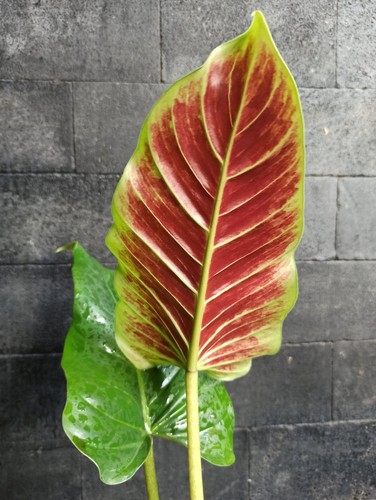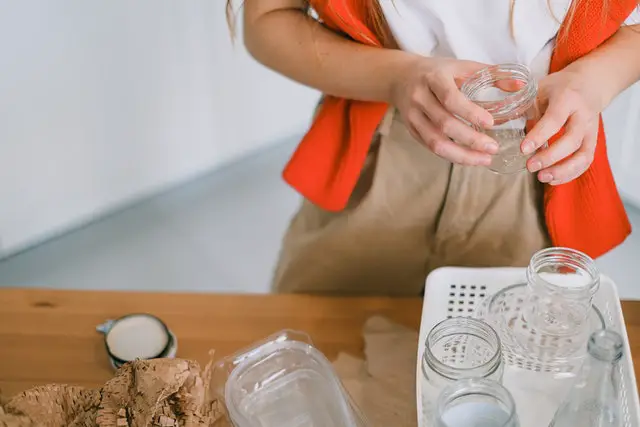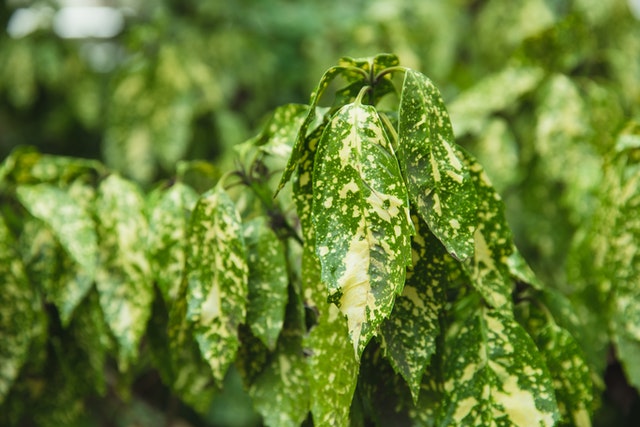Ever heard of a plant named Subhastatum Philodendron? The name is quite a tongue twister and NO, it is not from the world of magic. However, if you happen to see one, you might find its appearance somewhat magical. The leaves boast such vibrant colors that you might think they can only be found in deep, virgin forests.
In reality, the Subhastatum Philodendron is an indoor plant that serves as an aesthetical addition to the house interior and provides purified air. YES, it can make the air quality inside the house better. Did that catch your attention? Let us find out more about this plant. Discover the stunning Subhastatum Philodendron – an indoor plant with vibrant colors that can improve your home’s air quality.
What Is A Subhastatum Philodendron

A Subhastatum Philodendron is a rare tropical plant from the plant family ‘Araceae’. As a genus, the Philodendron is considered one of the largest and has 400 different species, including the Subhastatum Philodendron. Due to its size, color and maintenance, the plant is considered for ornamenting one’s interior.
The plant is notable for its bi-foliage leaves. The front side is green while the back is red and can get redder as the plant ages. As a tropical plant that grows along the riverbanks, Subhastatum Philodendron loves an ample amount of humidity. It also loves being in the shade, which puts less pressure on the demand for sunlight exposure.
As you have observed, the number of people adopting the hobby of growing indoor plants skyrocketed during the months when the COVID-19 pandemic was at its worst. The existence of Subhastatum Philodendron has piqued the interest of many, especially knowing that such a plant is rare.
Subhastatum Philodendron can fit well either as wall or pole decorations at home. No need to have it fixed in a boring pot. However, the plant contains a concerning amount of toxicity in it, which we will discuss more of it later on. Despite that, its best trait aside from its beauty is its air-purifying capability.
Health Benefits of Subhastatum Philodendron
The Subhastatum Philodendron not only adds beauty to your indoor space but also provides several health benefits. Apart from its air-purifying capability, this plant has been known to contribute to a healthier living environment.
Research suggests that indoor plants, including the Subhastatum Philodendron, can help reduce stress, improve focus and productivity, and enhance overall well-being. The presence of greenery in your home can create a calming and relaxing atmosphere, promoting a sense of tranquility and mental clarity.
Additionally, indoor plants have been found to increase humidity levels, which can alleviate respiratory issues and reduce the risk of dry skin and allergies. With its ability to improve air quality and create a positive ambiance, the Subhastatum Philodendron can be a valuable addition to your wellness routine.
Origin And Classification

Subhastatum Philodendron is originally hailed from the West Indies forests. It is classified as a climbing vine and can grow up to 6 feet tall and 2 feet wide. It may be a popular choice as an indoor plant, but the fact is that Subhastatum Philodendron is rare and can be expensive to obtain due to limited opportunities in the market.
Common Varieties of Subhastatum Philodendron
While the Subhastatum Philodendron is a captivating species on its own, it is worth noting that there are several other attractive varieties within the Philodendron genus that plant enthusiasts may enjoy.
Some notable examples include the Philodendron Birkin, known for its striking white pinstripes on dark green leaves, and the Philodendron Pink Princess, recognized for its unique pink variegation.
Additionally, the Philodendron Brasil features vibrant green and yellow foliage, creating a visually appealing contrast. Each variety offers its own distinct characteristics, allowing plant lovers to explore a diverse range of Subhastatum Philodendron cultivars and select the ones that best suit their aesthetic preferences and care requirements.
Whether you choose the classic Subhastatum Philodendron or opt for one of its captivating variations, these plants are sure to bring beauty and elegance to your indoor space.
Features Of Subhastatum Philodendron
The Subhastatum Philodendron is considered by many a beautiful ornamental plant. Although it is highly recommended for indoors due to its air-purifying capability, it can grow massively under great growing conditions. The best feature of this plant lies in the bi-colored leaves.
1. Height
The Subhastatum Philodendron can grow as tall as 6 feet and as wide as 2 feet. Fortunately, it is a climber-type vine. Therefore, you can have it wrapped around a column or let it crawl up a wall fixture. To keep it upright and stable, it is recommended to provide a pole for the plant to grow along.
2. Flowers & Leaves
The Subhastatum Philodendron doesn’t produce flowers. But the beauty of its leaves alone is enough to consider it for aesthetic purposes. Why? The leaves have 2 colors: the front side is colored green while the back is colored red. As it grows in years, the red side becomes much redder, like an Autumn vibe.
3. Foliage & Stem
![Subhastatum Philodendron Plant]](https://gardeningfaqs.com/wp-content/uploads/2022/07/pexels-david-bartus-879521-1.jpg)
As for the foliage, the Philodendron Subhastatum can be green and glossy. When it ages, the foliage also changes. As mentioned, the back side of the leaves gets redder also as it ages. It will become more prominent as if you’re watching 2 leaves of different colors being glued back-to-back.
4. Evergreen
This plant can blossom all year long. No matter what the season is, whether it is a very cold winter or a hot summer, it can grow well as long as the recommended growth requirements are met. Besides, the Subhastatum Philodendron thrives well indoors.
Basic Care Of Subhastatum Philodendron
The Subhastatum Philodendron requires minimal care. This means that there is no need to recreate your environment just to take care of the plant. With the guide below, you’ll surely have a healthy Subhastatum Philodendron.
1. Size & Growth
The Subhastatum Philodendron’s growth rate relies on the type of environment it is situated in. You can provide a pole so that the plant can grow steadily upright.
Having it as wall decorations, due to its aerial roots, may need a different kind of trellis compared to most climbing types. Use rough, damp support so that the branches can attach themselves.
2. Light Requirements
Having the plant exposed directly to sunlight can cause more damage than you may think. However, it still needs sunlight to grow, as long as provided indirectly. Take note that the Subhastatum Philodendron needs at least 4 to 6 hours of indirect sunlight daily. If your room is very enclosed, you can use growing lights as a substitute.
3. Water Requirements
Originally a riverbank plant, the Subhastatum Philodendron is a water-loving type. A critical point for this plant is when the 40 percent of its topsoil is dry, or for layman’s terms, the 2-inch layer of the soil.
If you want to be more precise, Subhastatum Philodendron, as an indoor plant, needs 600 to 800 mL of water. The pot is ideally 5 inches, and the plant needs to be watered every 9 days during the growing season. As an outdoor plant, 800 to 900 mL of water every 7 days is needed.
4. Soil Requirements
![Subhastatum Philodendron Plant]](https://gardeningfaqs.com/wp-content/uploads/2022/07/pexels-singkham-1108572.jpg)
The Subhastatum Philodendron needs rich and well-draining organic soil. The proportions of the soil must be equal between loam, peat and sand. An alkaline soil with a rate of 7 to 8 pH can be very beneficial to the Subhastatum Philodendron’s growth since it has more macronutrients.
5. Sunlight Requirements
As mentioned, the Subhastatum Philodendron needs only indirect sunlight. If you only have space for the plant to grow by the windows, make sure it has curtains to reduce sunlight exposure. A helpful tip for homes with enclosed interiors is that you can expose the plant under direct sunlight in the morning for 1 to 2 hours only and it’s good for the day.
6. Temperature & Humidity
Being a tropical plant, the Subhastatum Philodendron needs an optimum temperature of 59 to 86 degrees Fahrenheit. This means that it can thrive under normal room temperatures, even if you have an air conditioner running.
For the humidity levels, the plant needs 60 to 80 percent. If you can’t water it enough, you may use a humidifier and expose it to the mist for an hour interval each time. If you prefer a simple way, you can try the pebble-tray method.
7. Drought & Disease Resistance
The Subhastatum Philodendron doesn’t love drought. It can die easily from intense heat or lack of moisture. However, it doesn’t like being over watered also. It can trigger root rot in the long run. The plant is also susceptible to diseases like leaf spots and fungal infections.
8. Toxicity
The Subhastatum Philodendron is toxic to both pets and humans, only if there is long skin contact or if it is consumed. It contains active ingredients that can cause swelling on the part in contact with that plant, a burning sensation and diarrhea when consumed, and vomiting if pets feed on it. Immediate medical attention is necessary.
9. Fertilizing
The fertilizer used for growing Subhastatum Philodendron must be balanced. A liquid-based fertilizer with slight magnesium content is preferable during the growing season.
It needs to be fertilized every month but during dormancy, there is no need for such. Over-fertilizing can cause damage to the roots due to the increase of salt levels in the soil.
10. Potting & Repotting
Since the Subhastatum Philodendron grows slowly, it only needs to be repotted once every 2 to 3 years of its existence. If the growth is noticeable fast, it is preferable to repot during the growing season, which is during the spring and summer seasons. As you repot in a larger container, make sure the aforementioned care requirements are still met.
Pruning Requirements
![Subhastatum Philodendron Plant]](https://gardeningfaqs.com/wp-content/uploads/2022/07/pexels-cottonbro-4270181.jpg)
The Subhastatum Philodendron doesn’t need to be pruned now and then. If you noticed there are yellowing and damaged leaves, you can trim the plant annually. Make sure not to cut too much since it will affect the overall growth. Avoid also pruning during dormancy, which is during the winter season.
Pruning is an essential aspect of maintaining the health and appearance of the Subhastatum Philodendron. By removing dead, damaged, or overgrown parts, you can promote new growth and maintain a compact and well-shaped plant.
When pruning the Subhastatum Philodendron, it is crucial to use clean and sharp pruning tools to minimize the risk of infections. Start by identifying any yellowing or withering leaves and trim them at the base.
Additionally, if the plant has developed long and leggy stems, you can prune them back to encourage bushier growth. Remember not to prune too much at once, as this can stress the plant.
Instead, opt for regular light pruning throughout the year. After pruning, it is beneficial to provide the Subhastatum Philodendron with proper care, including appropriate lighting, watering, and fertilization, to support its recovery and encourage healthy regrowth.
Pruning is a simple yet effective technique to keep your Subhastatum Philodendron thriving and looking its best.
How To Propagate Subhastatum Philodendron
The Subhastatum Philodendron grows slowly, and patience is highly required during propagation. Since it is not a flower-bearing or fruit-bearing plant, the most common method for propagation is stem and tip cutting. This is done during the growing season. After the cutting, you can propagate it in 2 ways: either on water or on the soil.
Stem And/Or Tip Cutting
For Cutting Stems:
- Step 1: Select a stem that is healthy-looking with multiple leaves in a bundle (an indication of its health). It must be at least 2 inches in length.
- Step 2: Use a pruning knife or shear and cut the stem just below its node.
- Step 3: Remove the leaves on the stem except for a pair of them.
For Cutting Tips:
- Step 1: Cut a similarly healthy-looking stem with multiple leaves. This is the same as stem cutting.
- Step 2: Set it aside without removing the leaves along the trimmed stem.
Propagating In Water/Soil
For Propagation in Water
- Step 1: Select a small, preferably transparent jar (glass or plastic).
- Step 2: Fill it with distilled or clean water.
- Step 3: Place the stem or tip cutting inside the jar. Make sure at least one node is submerged in water and the leaves are not.
- Step 4: Position the jar where the cutting receives ample indirect sunlight.
- Step 5: For a duration of 2 to 3 weeks, change the water every 5 to 6 days.
- Step 6: Once the roots are showing up, measuring at least 1 to 2 inches long, you can transplant them to a soil pot and continue the growing process while following the care requirements stated above.
For Propagating in Soil
![Subhastatum Philodendron Plant]](https://gardeningfaqs.com/wp-content/uploads/2022/07/pexels-anna-shvets-5830978.jpg)
- Step 1: Select a pot filled with an adequate amount of appropriate potting mix.
- Step 2: Place the cutting in the mixture. You can add some rooting hormones.
- Step 3: Cover the pot with clear plastic and make sure it seals the moisture inside.
- Step 4: Position the pot under indirect sunlight.
- Step 5: Water every 2 days to keep the soil moist.
- Step 6: After a month, check for new feeder roots by tugging gently on the cutting.
- Step 7: If noticeable roots are growing, you can now transplant them to another pot and continue growing.
Air Layering
In addition to stem and tip cutting, another effective method for propagating the Subhastatum Philodendron is air layering. This technique involves creating a new root system on a mature stem while it is still attached to the parent plant.
To perform air layering:
- select a healthy stem and make a small upward cut in the middle of the stem, just below a node.
- Gently peel back the bark to expose the inner layer, known as the cambium.
- Apply a rooting hormone to the exposed cambium and cover it with moist sphagnum moss or a mixture of peat moss and perlite.
- Wrap the moss and stem with plastic wrap, ensuring it remains secure.
- Over time, roots will develop in the moss, and once they are well-established, the rooted section can be cut from the parent plant and potted separately.
Air layering is a reliable method to propagate the Subhastatum Philodendron and can result in a new plant with a well-established root system.
Common Problems In Caring For Subhastatum Philodendron
Although Subhastatum Philodendron needs minimal care, you can encounter problems. If not taken care of, it might get troublesome quick. Here are the common ones:
1. Plant Pests
These pests include mealybugs, aphids, spider mites and scales. They suck up the saps on the plant’s leaves and stem. To solve this problem, you can either pick them up by hand or spray an organic insecticidal solution. You can apply neem oil also on affected parts. To prevent this from happening, water the plants regularly as you inspect them and avoid over-fertilizing.
2. Algal Leaf Spot

The Algal Leaf Spot is a foliar disease caused by the presence of Cephaleuros virscens. It looks like a grey or green blotch on the surface of the plant’s leaf. If left unattended, it will cause the leaves to wilt. To solve this, always use a good, cultured technique to ward the disease off. Maintain the required humidity and use copper-containing chemical fungicides.
Read more on plant types: Shamrock Spider Plant Plant, Grow & Care Guide 2022
Conclusion
While Subhastatum Philodendron is a gorgeous, functional plant that is easy to maintain, there can be hurdles that you might encounter if you lack the minimum care requirement and ignore the common problems. Even though it may be pricey, Subhastatum Philodendron is a great indoor plant that can improve air quality.
The Subhastatum Philodendron can be purchased online even if it is rare. Online stores like Etsy listed the plant for $29 if small and potted and $100 plus if large.
Frequently Asked Questions
How much sunlight do philodendron plants need?
The Subhastatum Philodendron can blossom indoors all year round. It can grow best under medium light or bright, indirect sunlight. If you happen to notice several leaves that are yellow at the same time, this can be an indicator of too much sunlight exposure.
Can philodendron get morning sun?
Subhastatum Philodendron without green leaves is more tolerable to bright light exposure. You can have them exposed for 1 to 2 hours but any more than that can be concerning. For growing or full-grown Subhastatum Philodendron, indirect sunlight is enough.
Why is my philodendron not growing leaves?
Due to lack of regular fertilization, a split-leaf philodendron can happen. It is a condition where the plant is not growing any more leaves and to solve that, you need to fertilize it every month but only during the growing season. The ideal ratio for a houseplant fertilizer is 10-10-10.

Hey, I’m Lisa and I’ve been an avid gardener for over 30 years. I love writing, talking and living in the garden! Feel free to connect with me on my socials below

![Subhastatum Philodendron Plant]](https://gardeningfaqs.com/wp-content/uploads/2022/07/shutterstock_2115182618-1024x683.jpg)